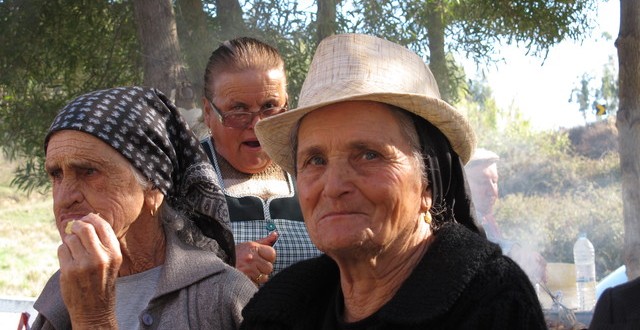The village communities in the Alentejo, all the human biotopes comprising welfare, sharing and mutual responsibility, hospitality, collective memory and togetherness, are not yet a thing of the past. Consumers want to know who produces their food. Young people long for their grandparents’ understanding. In different suburban areas and villages, local people want to be in charge of their own administration. Couples and young families need to have people to talk to, genuine support, community. Perhaps it is the old people who can play a role here. An insight into the Alentejo villages and their quest for resurrection.
Re-inventing the village communities in the Alentejo
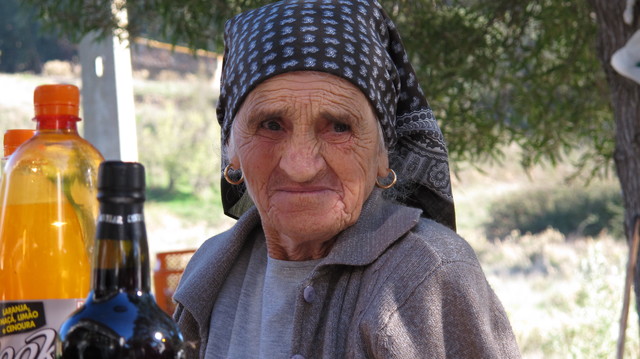
Anyone wanting to experience true love should go to Valle Touriz in the parish of Sabóia in the municipality of Odemira and visit Maria Constância. She is only chest-high to most people, and her face under her headscarf is wrinkled like a dried fig. But her eyes sparkle, and her hands stroke those of people she’s with so warmly and ceaselessly that even the biggest good-for-nothing gets the feeling of being loved. And if you then lavish praise on her walnut cake too, the 87-year-old radiates delight.
Maria Constância is the ideal granny – but a granny with no grandchildren. No grandchildren, no one to chat to, no neighbours or other people for whom she could simply be there, or who are there for her: she lives alone on her farmstead. Her children have moved away, and her husband died. Her nearest neighbour lives four kilometres away and is himself over 80. There are no modern conveniences like electricity, running water, heating and a toilet in her house, but there are chickens and a goat running in and out. The hamlet of Valle Touriz, which was once known for its high-spirited dance festivals, has fallen silent these days. To avoid becoming depressed, you need to have a very robust nature. 80% of the old people in the vast expanses of the Alentejo lead lives like that of Maria Constância.
“Medical care for the elderly in the rural areas ranges from unreliable to catastrophic,” says psychologist Fábio Medina. “With pensions of just 200 euros most of them are desperately poor. But the worst thing is the loneliness.”
And so it is that this picturesque landscape with its gentle hills, its tiny farms spread far and wide and whitewashed clay houses, its old wells, herds of goats and cork oak forests, is dying out, quite literally: Sabóia is the parish with the highest suicide rate in Europe.
“That’s why we’re here,” says Fábio, who regularly visits the elderly people with his colleague Tania. “We were employed to find out what can be done to rekindle people’s will to live.”
Fábio and Tania organise medical care for the elderly, they help them to apply for higher pensions, set up meeting points where they can do craftwork, share ideas and celebrate together, they drive them there and pick them up.
Fábio: “That is all good – but it is also much too little. What these people actually need is the same as the region in general: young people who live here again and contribute their energy. I am hopeful that young people may return to the countryside because of the crisis, and breathe new life into it.”
Relíquias – cooperative seeks new talent
Daniel Balinhas, há 17 anos dirigente da cooperativa de Relíquias, uma localidade a 50 km de Sabóia, chega à mesma conclusão.
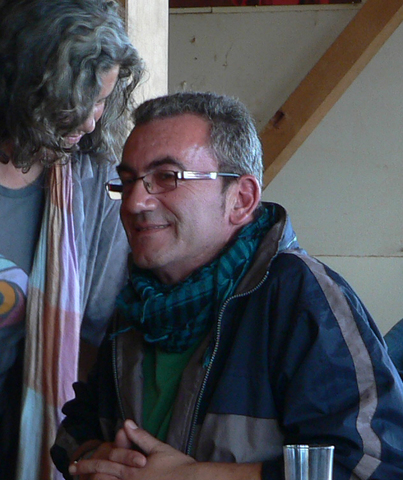
Daniel Balinhas, who, for 17 years, has headed the cooperative in Relíquias, a parish some 50 km north of Sabóia, comes to the same conclusion. Since the last local elections, he is also the mayor. The cooperative’s shop and its small bar are still the heart, soul and public living room of the village community. People meet here after the shops close for a glass of wine or a coffee, and chat. They have known each other – for decades. They hold peaceful village parties – be it for the Feast of the Assumption or for the anniversary of the revolution – and they share in taking care of needy neighbours. But, there are no longer any regional products here, once the cooperatives’ raison d’être: “After the revolution, the cooperative was founded by the residents to provide for ourselves reciprocally and fairly, and as a trading place for agricultural and craft products.”
Since the 1990s, laws have systematically made the work of the cooperatives more difficult. In tax terms, they are on a par with the supermarkets nowadays, but economically they cannot keep pace with them. The members of the cooperative are mostly too old to still produce a surplus on their farms. What will happen when this generation too is no longer there? Will their land – as in so many places in the surrounding area – also be bought up by international agribusinesses and transformed into monoculture cultivation? Into irrigated olive plantations, into eucalyptus or pine deserts?
Daniel would like to prevent this. He’s setting his hopes on the positive side of the crisis: “Life in the cities is getting harder and harder for many young people. They will come back, I am sure. And we who have stayed here have the duty to assimilate them in their inexperience and to help them.”
He finds it an enrichment that several communes and alternative communities have moved to Relíquias and the surrounding area. He doesn’t regard regional autonomy through decentralisation as impossible because he’s seen that something similar can work: with his grandmother. As a child he often accompanied Tia Inácia when she drove through the villages in her donkey cart providing what people needed – eggs, scissors and new trousers. Customers paid with what they had to spare: cheese, bread or honey. In this way, her range of goods grew. “Tia Inácia dos ovos” – auntie Inácia with the eggs – that was a system that now has to be translated into the modern era to ward off the attacks of globalisation.
The economic crisis could benefit this plan. Since the job and career prospects of young people are melting away quicker than goat’s cheese in the Portuguese sunshine, the country has been seeing the highest emigration rate since 1969. But it is attracting some young, well educated people to the countryside. And in this way the people of the Alentejo are getting new neighbours: students and academics, people who are unemployed or new farmers, hippies or young entrepreneurs.
São Luis – village in transition
For example, a few years ago, Pedro and Elise Holton moved as a young couple from Lisbon to S. Luís. It was, as it were, a homecoming to their grandparents’ village. They took over the agricultural trade, offer ecotourism tours to see craftspeople and farms and sell traditional products: shepherd’s art made from olive wood and cork, handmade soaps, pottery, woven and embroidered blankets, cork designer wear.
Elise: “When you first move to the countryside, everything seems ideal – nature, the peace and quiet, the fresh air. But after two or three years you notice that you have too few people to talk to. There is a village community, but you don’t belong to it. So you have to think of something.”
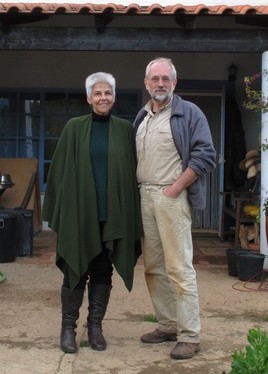
Nowadays, a common idea links the new arrivals and the old residents. Carmen and Sergio Maraschin, a biologist and a geologist respectively, moved here five years ago from Totnes, England, and brought the idea of the “transition town” with them. They founded São Luis em Transição.
Carmen: “What will happen after peak oil, when the supermarkets are empty? Who is going to take care of you? Not your international friends but your neighbours. We have to build up neighbourhoods again, worldwide.”
A barter market for local products came into being, and a weekly cinema with films about sustainability – and thanks to a successful campaign, the roof of the local parish council now bears a photovoltaic system.
Sergio: “That was only possible because locals and new arrivals worked together.” Together with the parish of Relíquias, they came second in Odemira’s 2012 annual budget competition – and so took the first step towards becoming autonomous in energy.
Village of Amoreiras: a culture of givin
Amoreiras is a picture-book village: white, tightly packed houses with little towers, tidy gardens and life in the street. A blacksmith welds the wheel of a farm implement, older women stand and chat, a shop is open, children run around on a playground. How has that happened?
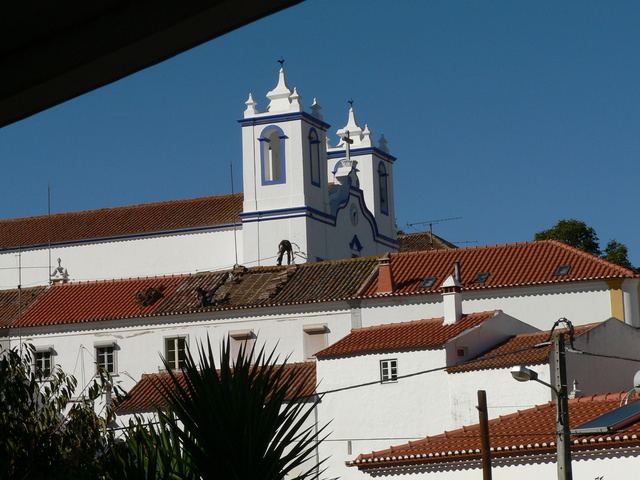
In 2005, a small group of students from Lisbon founded “Aldeia Amoreiras Sustentável” (sustainable Amoreiras). They asked the inhabitants about their dreams and their wishes – and tried to put these into practice. Numbers on the houses, village festivals, language courses, a playground – but above all the presence of young people created a centre of attraction. Nowadays, 20% of the village population are under the age of 30 – that’s a lot.
With her young daughter and her partner João, Monica has successfully integrated into the village community. João helps the old farmers out and sometimes brings them a tool of some kind from the town. Monica keeps an eye on the old people in the neighbourhood and helps where she can. In return, they regularly find home-baked items, preserves or vegetables on their doorstep. Monica: “We have adopted each other reciprocally. We haven’t bought any more fresh vegetables for six months.”
João comes from a village in the north, he’s very familiar with country ways. “As soon as we moved in, the first neighbours brought us gifts: jam, cake and fruit. They’re not just a matter of politeness. Reciprocal gifts were part of the traditional village economy. If you want to take part, you think of return gifts and become part of a subversive, money-free subsistence economy. If not, you remain a guest in the village.” That is something you could build on, according to some pioneers of alternative money systems.
Experts with no schooling
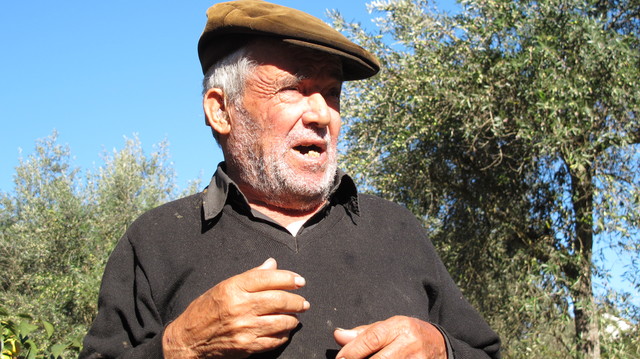
One of the neighbours is the mischievous António de Rosa, aged 83. Growing in his garden are tomatoes, peppers, sweet potatoes, carrots and cabbage in the shade of apple and persimmon trees. Wonderful diversity. Two pigs are eating overripe persimmons that António knocks off the trees.
Who would have thought such variety possible in such a sparse landscape. They only use manure and compost as fertilisers, and that is since he took over the garden from his parents as a child. Proudly, he shows off mini-persimmons, sweet cucumbers and sturdy sweet potatoes, all his own varieties. His son Jorge, a taciturn, introspective man around 40, is ploughing the field with a horse and a donkey. We can hear his musical cries from far off.
Without ever having been to school, António is a sought-after expert way beyond his village. Whenever a pig is ill in the immediate neighbourhood or further afield, or a new variety of fruit is to be planted, he is the person to fetch. “I don’t get paid for it,” he says “but I am given lunch, and that’s how I get around the region.”
The whole Alentejo could bloom like António’s garden if we grasped hold of the knowledge of such people.
Maria Constância from Valle Touriz is beaming again. Today, as on the second and last Wednesday of every month, Fábio and Tania invite the old people in the parish around. People put some things on the grill, have a drink, sing and gossip, almost like in the old days. The foreign visitors are also hugged and embraced without fuss, although they speak a funny sort of Portuguese and put vegetables and corn-on-the-cob on the grill instead of “porco” and “frango”. And why not? Everyone does as they please, the main thing is that they have their share of cake and wine.
António, Maria Constância and all the other old folk still have a lot to give. In the same way as a forest helps new trees to germinate, they can also contribute to new village communities growing. Grandchildren are welcome, even those with foreign parents.
 Eco123 Revista da Economia e Ecologia
Eco123 Revista da Economia e Ecologia

